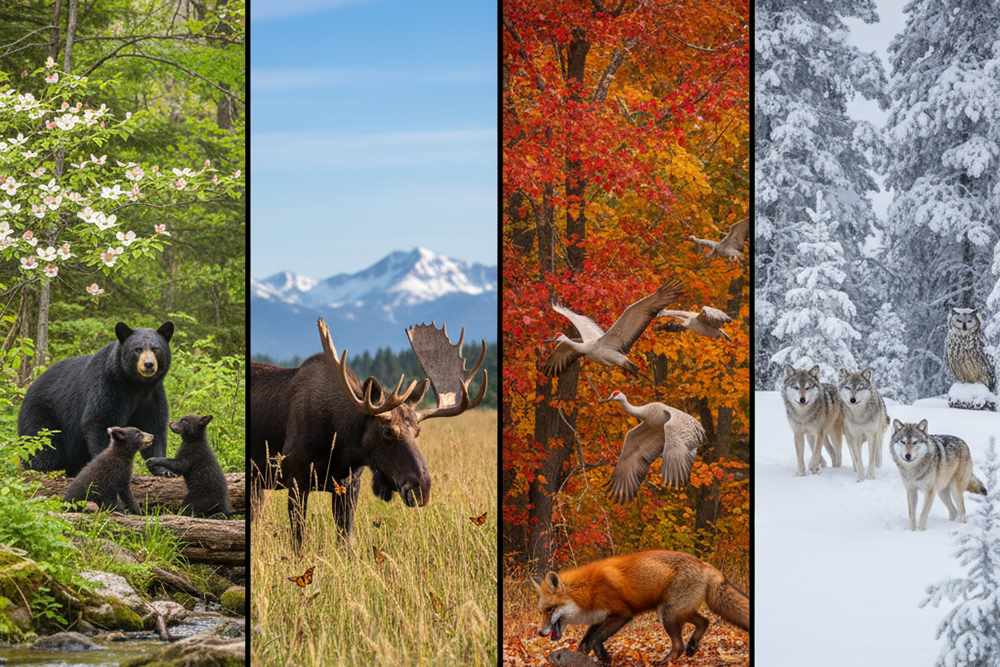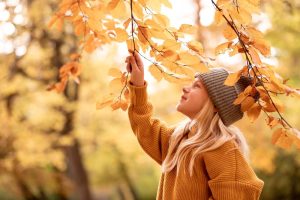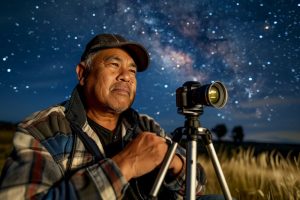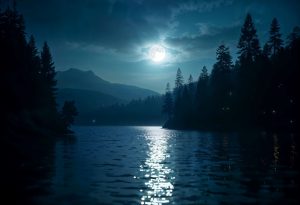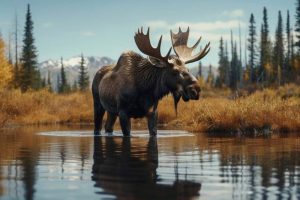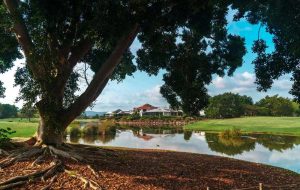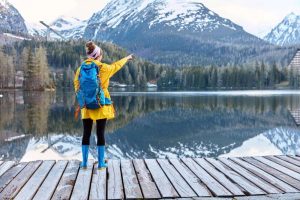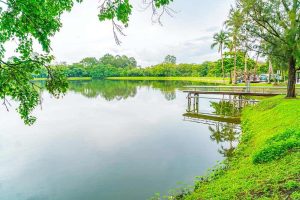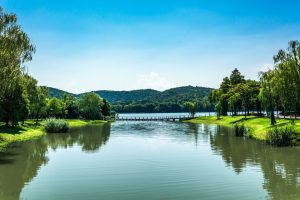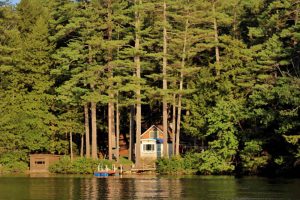Stretching across more than 7,600 square kilometers of pristine wilderness, Algonquin Provincial Park is a paradise for nature lovers and wildlife enthusiasts alike. Located in the heart of Ontario, the park is one of Canada’s most celebrated destinations for wildlife spotting. Canada offers a front-row seat to nature’s incredible diversity. From the haunting call of a loon echoing across still waters to the quiet rustle of a moose in the marshes, Algonquin wildlife reveals the rich tapestry of Canada’s ecosystems throughout the seasons.
Whether you’re planning a spring canoe trip or a winter snowshoe adventure, this guide explores what animals to see, when to see them, and how to spot them responsibly during your next Ontario nature trip.
1. The Seasonal Rhythms of Algonquin Wildlife
Algonquin Park is alive year-round, but each season paints a different portrait of its natural world. To make the most of your visit, it’s important to understand how wildlife behavior changes with the seasons.
Spring: The Awakening of the Wild
As the snow melts and rivers flow freely, spring breathes new life into Algonquin. Moose emerge to feed on aquatic plants, black bears come out of hibernation with cubs in tow, and migratory birds return to nest.
Key spring highlights:
- Moose spotting: Along Highway 60, especially around May, moose gather near roadside salt pools to lick minerals.
- Birdwatching: Look for warblers, loons, and osprey as they reclaim their summer homes.
- Beaver activity: Early mornings and evenings offer the best chance to see beavers repairing dams and lodges.
Summer: A Symphony of Life
Summer is the most active time for Algonquin wildlife. The park teems with life — from turtles basking on logs to deer grazing in open meadows. The longer days and warmer temperatures make this an ideal time for canoeing, hiking, and animal watching tips in action.
Key summer highlights:
- Common sightings: Whitetail deer, otters, foxes, chipmunks, and a variety of waterfowl.
- Nightlife: Nocturnal animals like wolves and owls become more vocal after sunset — perfect for guided wolf howls organized by the park.
- Insects and reptiles: Painted turtles, frogs, and snakes are commonly spotted near lakes and trails.
Autumn: The Season of Change
Fall is perhaps the most visually stunning season in Algonquin. As maples blaze red and gold, animals prepare for the coming cold. This season is also one of the best for wildlife spotting in Canada due to cooler weather and fewer bugs.
Key autumn highlights:
- Moose rutting season: In September and October, moose are highly active and easier to spot near lakes and bogs.
- Bird migration: Watch thousands of geese, ducks, and loons gather before their southward journey.
- Bear sightings: Black bears forage extensively before winter hibernation.
Winter: Quiet Beauty and Resilient Wildlife
When snow blankets Algonquin, the park transforms into a peaceful, white wilderness. While some species hibernate, others remain active — offering a chance to see how animals adapt to Canada’s harsh winter.
Key winter highlights:
- Wolf tracking: Fresh snow reveals wolf and fox tracks along trails.
- Birds of winter: Chickadees, gray jays, and woodpeckers are common companions for snowshoers.
- Snow mammals: Watch for snowshoe hares, martens, and red squirrels darting between pine trees.
2. Iconic Animals You Can Spot in Algonquin Park
The park is home to more than 50 species of mammals, over 270 bird species, and countless reptiles and amphibians. Each visit offers something new — no two encounters are ever the same.
a. Moose — The Monarchs of Algonquin
Towering and majestic, moose are the most sought-after Algonquin wildlife. These gentle giants are commonly seen near swamps, ponds, and salt-rich ditches. Early morning and late evening are prime viewing times.
b. Beavers — Canada’s National Engineers
Beavers are abundant throughout the park. Look for lodges along slow-moving creeks or lakesides. Their evening routines — collecting branches or slapping tails as warnings — make for fascinating Ontario nature trip moments.
c. Black Bears — The Forest Wanderers
Though shy, black bears are occasionally visible during spring and fall. They play a vital role in the ecosystem by dispersing seeds and controlling insect populations. Remember: observe from a distance and never feed wildlife.
d. Wolves — The Voices of the Wild
Eastern wolves roam Algonquin’s interior forests. They are elusive but often heard rather than seen. During the park’s famous “Public Wolf Howl” events in August, visitors can listen to packs respond to human howls — an unforgettable experience.
e. Birds — The Melodic Residents
From the haunting call of the loon to the vibrant flash of a pileated woodpecker, birdwatchers are never disappointed. Each season brings unique species: spring warblers, summer loons, autumn hawks, and hardy winter finches.
3. Best Spots for Wildlife Viewing in Algonquin
While wildlife can appear anywhere, certain areas consistently yield sightings thanks to diverse habitats and accessibility.
- Highway 60 Corridor: The most popular route for casual visitors. Drive slowly, especially around dawn and dusk — prime moose-watching times.
- Mizzy Lake Trail: One of the park’s best animal watching destinations, offering a mix of wetlands and forests perfect for spotting beavers, loons, and turtles.
- Beaver Pond Trail: A short, family-friendly trail with scenic lookouts over active beaver colonies.
- Spruce Bog Boardwalk: Ideal for photographers and bird enthusiasts. You might spot gray jays and spruce grouse here year-round.
- Arowhon Road and Rock Lake Road: Less crowded but excellent for Algonquin wildlife encounters, especially moose and deer.
For a truly immersive experience, consider backcountry canoe trips — wildlife tends to be more relaxed in areas far from crowds.
4. Responsible Wildlife Watching Etiquette
As much as we love to observe animals, it’s crucial to prioritize their safety and well-being. Responsible behavior ensures that wildlife spotting in Canada remains sustainable for future generations.
Key guidelines:
- Keep your distance: Use binoculars or a zoom lens — never approach wildlife.
- Stay quiet: Sudden noises or movements can stress animals.
- No feeding: Human food can harm animals and alter their natural behavior.
- Leave no trace: Carry out everything you bring in, including trash.
- Respect nesting and denning sites: Avoid disturbing young animals or their habitats.
Following these practices not only protects the animals but also enhances your experience — you’ll see more authentic, natural behavior when animals feel safe.
5. Photography and Animal Watching Tips
Capturing Algonquin wildlife through photography is both thrilling and rewarding, but it requires patience and respect for nature’s rhythm.
Here are a few expert-level animal watching tips:
- Go early or stay late: Most animals are active at dawn and dusk.
- Use natural light: Avoid flash, as it startles animals.
- Blend in: Wear muted colors to minimize visibility.
- Be patient: Sit quietly near water sources or trails — movement often attracts curious creatures.
- Use long lenses: A 200mm or higher lens allows close-up shots without intrusion.
Remember, great photography in the wild is about storytelling — capturing behavior, emotion, and interaction rather than just the animal itself.
6. Planning Your Ontario Nature Trip
To fully enjoy Algonquin, preparation is key. Weather, accessibility, and regulations vary by season.
Before you go:
- Check park updates: Visit Ontario Parks’ official website for current trail conditions and closures.
- Book early: Accommodations like campsites and lodges fill quickly, especially during the fall.
- Pack essentials: Binoculars, camera, maps, water, insect repellent, and layered clothing.
- Know the regulations: Fishing, camping, and drone photography all require specific permits.
For those seeking guided experiences, several tour operators offer specialized Ontario nature trips focused on wildlife photography, birdwatching, or canoe expeditions — perfect for beginners or visitors unfamiliar with the park.
7. The Magic of Every Visit
No matter the season or the weather, Algonquin Park never fails to inspire awe. The thrill of seeing a moose emerge from the mist, a loon calling across a glassy lake, or a family of beavers at work connects us deeply to the rhythms of the wild.
Beyond the photos and memories, visiting Algonquin reminds us of our responsibility to protect these spaces — to ensure that Algonquin wildlife continues to thrive for generations to come.
Conclusion: Embrace the Wild, Respect the Balance
Algonquin Park is more than just a travel destination — it’s a living classroom where nature teaches patience, respect, and wonder. Whether you’re a seasoned photographer, a casual visitor, or a first-time adventurer, there’s always something new to discover.
From spring awakenings to winter stillness, each season offers its own wildlife spectacle. With preparation, respect, and curiosity, your next trip to Algonquin will be more than a vacation — it will be an unforgettable wildlife spotting Canada experience that reconnects you with the heart of nature.
Frequently Asked Questions (FAQs)
Q1. When is the best time to see wildlife in Algonquin?
A: The best time is spring and fall when moose, beavers, and birds are most active. Early mornings and evenings offer the highest chances for wildlife sightings.
Q2. What animals can you spot in Algonquin Park?
A: Visitors can see moose, beavers, wolves, black bears, deer, foxes, loons, and over 270 bird species, depending on the season and location within the park.

